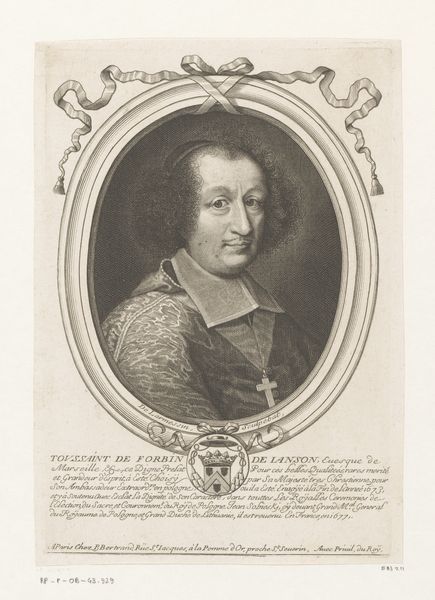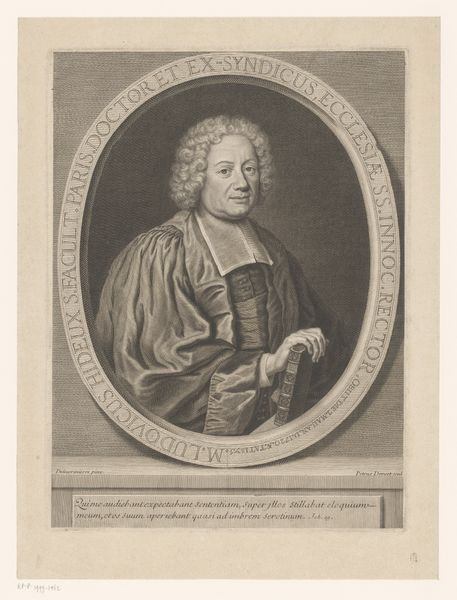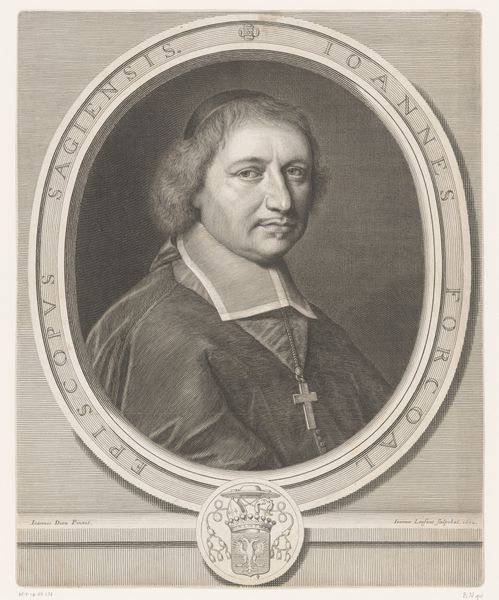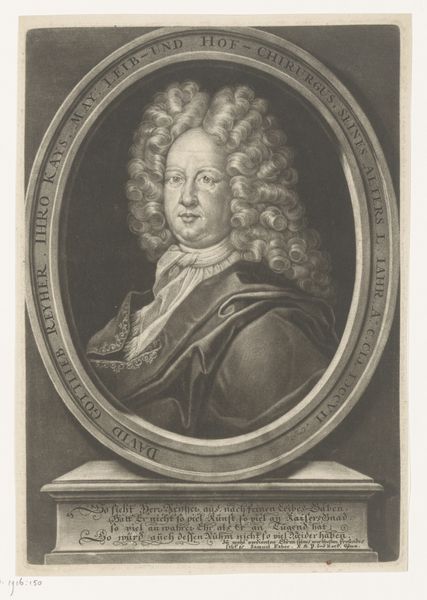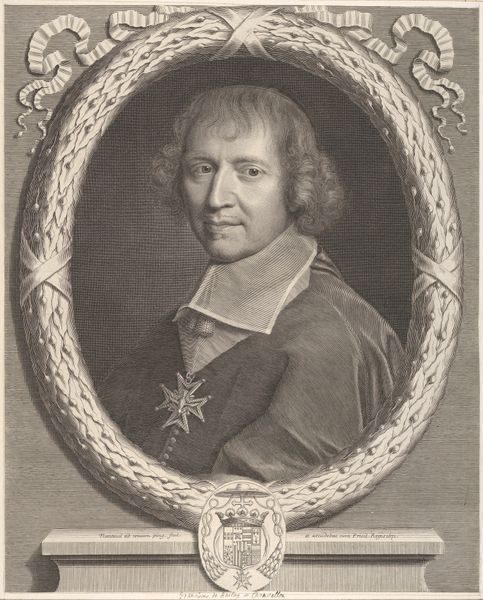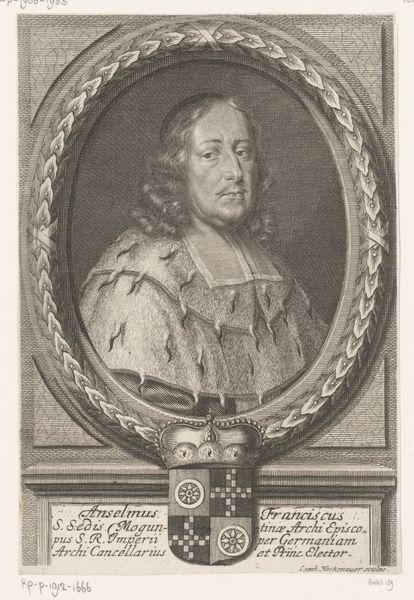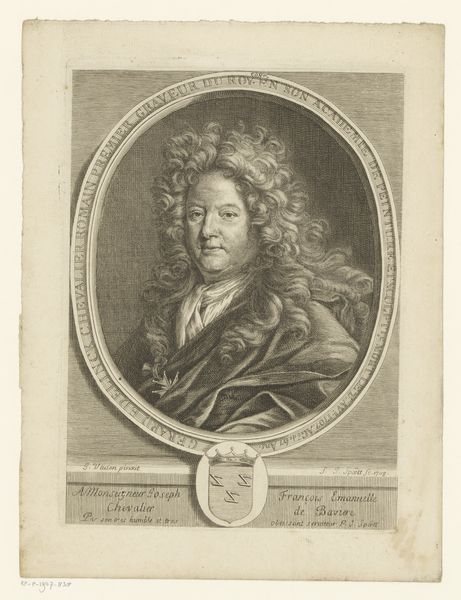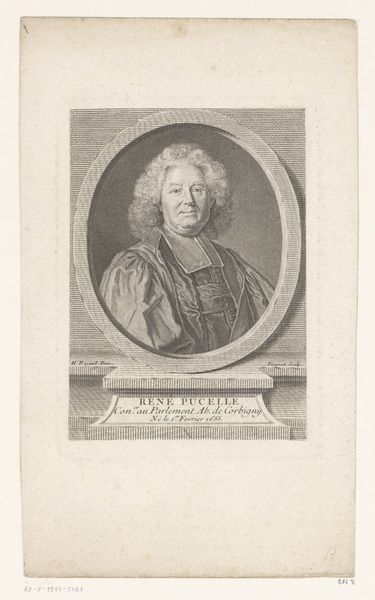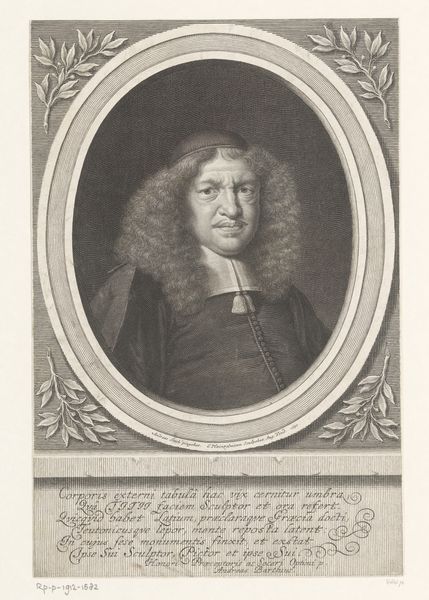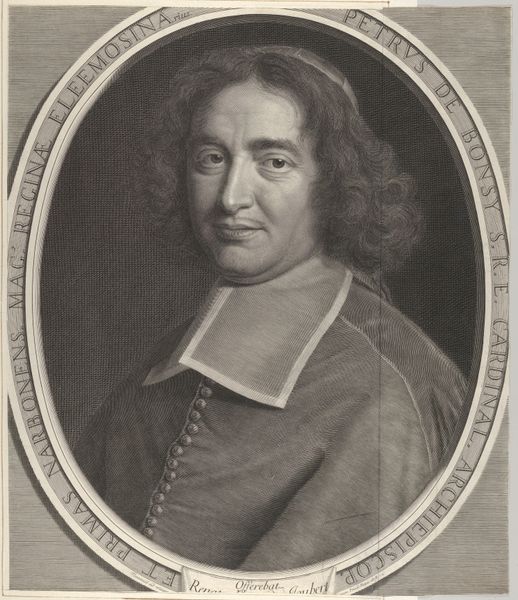
drawing, charcoal
#
portrait
#
drawing
#
baroque
#
charcoal drawing
#
portrait drawing
#
charcoal
#
history-painting
#
realism
Dimensions: overall: 17.5 x 12.5 cm (6 7/8 x 4 15/16 in.)
Copyright: National Gallery of Art: CC0 1.0
Curator: Take a moment to observe Carl Gustav Amling's "Portrait of a Gentleman," crafted in 1690. Editor: The subdued monochrome creates a compelling sense of intimacy, wouldn't you agree? There's something immediately captivating about the controlled tones within that oval frame. Curator: Precisely. Amling's mastery of charcoal in this Baroque portrait drawing demonstrates a commitment to surface texture and form. Consider the contrasting planes across the gentleman's face and how he uses line to indicate texture on the wig and robe. Editor: That opulent robe. It speaks volumes, doesn’t it? A clear visual marker of status during the Baroque period. One can imagine the social circles in which such a man moved. Curator: Indubitably, the robe's detailing indicates a degree of affluence, however the lack of other details allows one to analyze Amling's approach to chiaroscuro and form. Note how the charcoal renders the softness of the hair versus the defined lace at his throat. Editor: It really brings that area of his face forward, doesn't it? That focus subtly leads to an almost unnerving confrontation. Do you feel as though it brings us, as the viewer, into conversation with him? Almost as an equal? Curator: Interesting. One can consider this artwork as it intersects with others like it and other Baroque historical portraits. The drawing encapsulates broader socio-political climates that upheld societal expectations regarding image, rank, and comportment during that period. Editor: True, though his steady gaze suggests self-awareness beyond mere rank; Amling captured a glimpse of inner complexity amidst that era's social performance. The slight upturn in the corner of the gentleman's lips creates this sense of curiosity within an individual portrait, within all the historical weight we add to it. Curator: An excellent observation. Looking closely at this charcoal rendering from a formal perspective allows us to view, not just the aesthetic value of a drawing done in charcoal in the Baroque style, but the careful compositional techniques that highlight it as a lasting artwork in and of itself. Editor: Agreed. Considering how societal forces shape both production and consumption of art helps contextualize our relationship to the "Portrait of a Gentleman," enriching how it addresses us even centuries later.
Comments
No comments
Be the first to comment and join the conversation on the ultimate creative platform.
